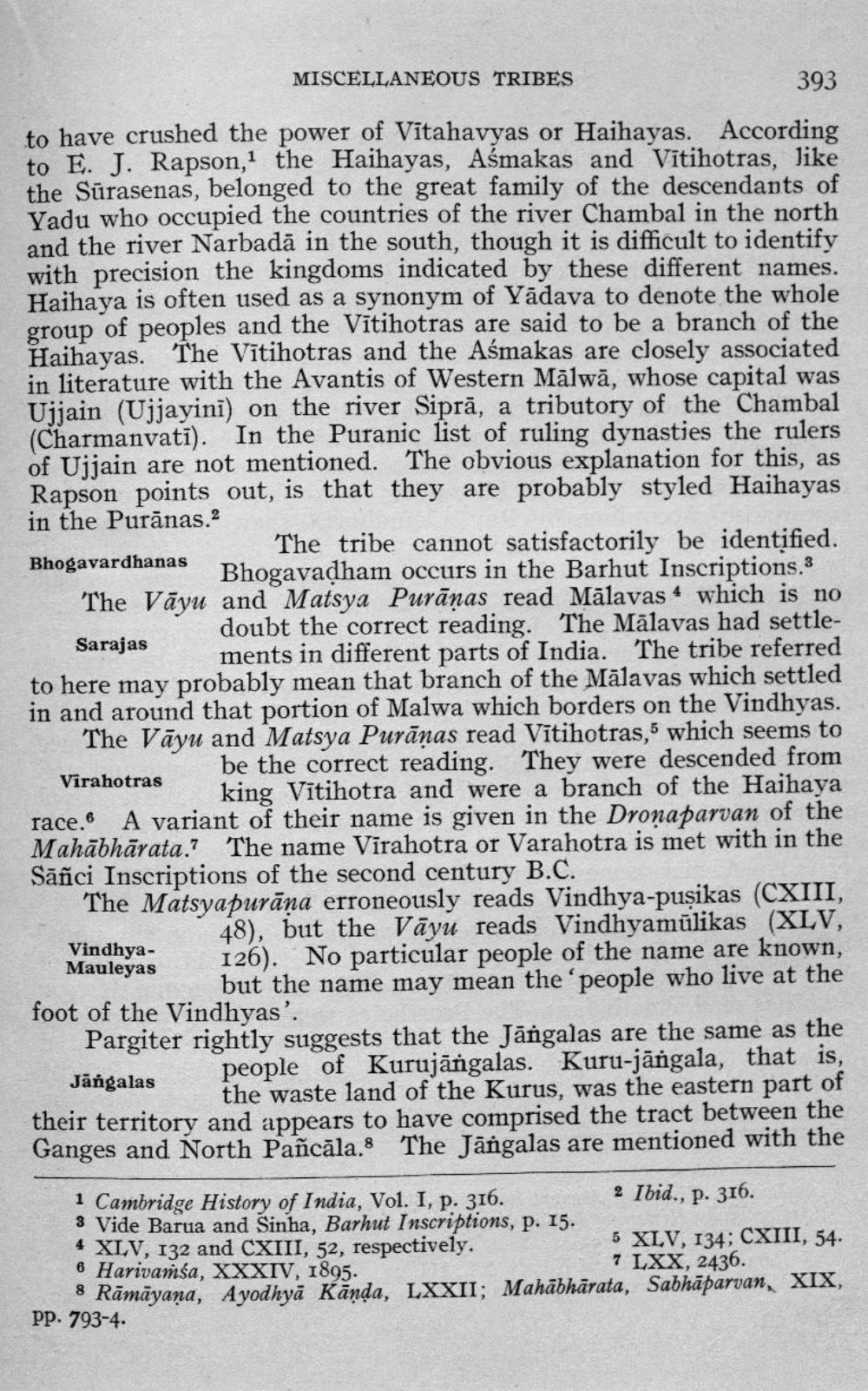________________
MISCELLANEOUS TRIBES
to have crushed the power of Vitahavyas or Haihayas. According to E. J. Rapson,1 the Haihayas, Aśmakas and Vitihotras, like the Surasenas, belonged to the great family of the descendants of Yadu who occupied the countries of the river Chambal in the north and the river Narbada in the south, though it is difficult to identify with precision the kingdoms indicated by these different names. Haihaya is often used as a synonym of Yadava to denote the whole group of peoples and the Vitihotras are said to be a branch of the Haihayas. The Vitihotras and the Aśmakas are closely associated in literature with the Avantis of Western Malwa, whose capital was Ujjain (Ujjayini) on the river Sipra, a tributory of the Chambal (Charmanvati). In the Puranic list of ruling dynasties the rulers of Ujjain are not mentioned. The obvious explanation for this, as Rapson points out, is that they are probably styled Haihayas in the Puranas.2
393
Bhogavardhanas
Sarajas
The tribe cannot satisfactorily be identified. Bhogavadham occurs in the Barhut Inscriptions.3 The Vayu and Matsya Puranas read Mälavas which is no doubt the correct reading. The Malavas had settlements in different parts of India. The tribe referred to here may probably mean that branch of the Malavas which settled in and around that portion of Malwa which borders on the Vindhyas. The Vayu and Matsya Puranas read Vitihotras," which seems to be the correct reading. They were descended from
Virahotras
race.6
king Vitihotra and were a branch of the Haihaya A variant of their name is given in the Dronaparvan of the Mahabharata." The name Virahotra or Varahotra is met with in the Sañci Inscriptions of the second century B.C.
VindhyaMauleyas
The Matsyapurana erroneously reads Vindhya-pusikas (CXIII, 48), but the Vayu reads Vindhyamulikas (XLV, 126). No particular people of the name are known, but the name may mean the 'people who live at the foot of the Vindhyas'.
Pargiter rightly suggests that the Jangalas are the same as the people of Kurujangalas. Kuru-jangala, that is,
Jāngalas
the waste land of the Kurus, was the eastern part of their territory and appears to have comprised the tract between the Ganges and North Pañcala. The Jangalas are mentioned with the
2 Ibid., p. 316.
4 XLV, 132 and CXIII, 52, respectively.
5 XLV, 134; CXIII, 54. 7 LXX, 2436.
6 Harivamsa, XXXIV, 1895.
8 Ramayana, Ayodhya Kanda, LXXII; Mahabharata, Sabhaparvan, XIX,
PP. 793-4.
1 Cambridge History of India, Vol. I, p. 316.
3 Vide Barua and Sinha, Barhut Inscriptions, p. 15.




